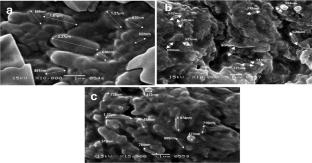Treatment of synthetic textile sewage containing anthraquinone and azo based disperse dyes using bacterial consortium
Abstract
Untreated wastewater from industries containing synthetic dyes may raise several health and ecological concerns. The environmental legislature compels industries to treat effluents before final disposal and recycling. Therefore, there is a need to develop a competent bioremediation strategy to treat effluent released from industries. The aim of this research was to develop a bacterial consortium for the treatment of synthetic textile sewage containing toxic dyes. In this research, two bacteria namely Bacillus licheniformis KIBGE IB21 and Glutamicibacter uratoxydans KIBGE IB41 were used to develop bacterial consortium. Bacterial consortium C4 assisted in 88% and 76% decolorization of synthetic textile sewage 1 and 2, respectively at 35 °C after 18 h of incubation. Difference in retention time in high performance liquid chromatography showed dyes degradation in treated samples. Fourier transform infrared spectroscopy confirmed the degradation of dyes chromophore. Water quality analyses showed a decrease in total suspended solids and biological and chemical oxygen demand of treated samples. MTS assay showed 100% and 95% detoxification of sewage 1 and 2, respectively. The prepared bacterial consortium also exhibited profound results in real textile effluent. This bioremediation approach is a step to treat industrial effluents that may help in the recycling of wastewater.


 求助内容:
求助内容: 应助结果提醒方式:
应助结果提醒方式:


